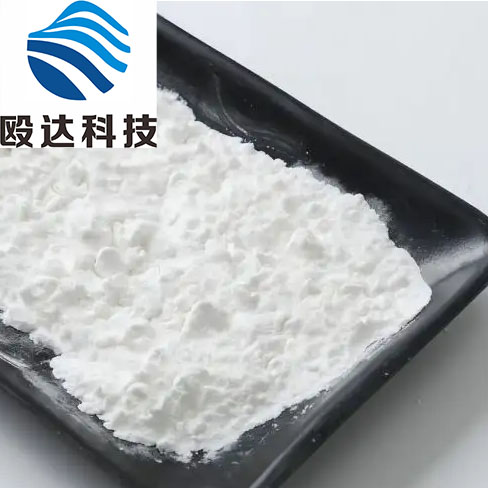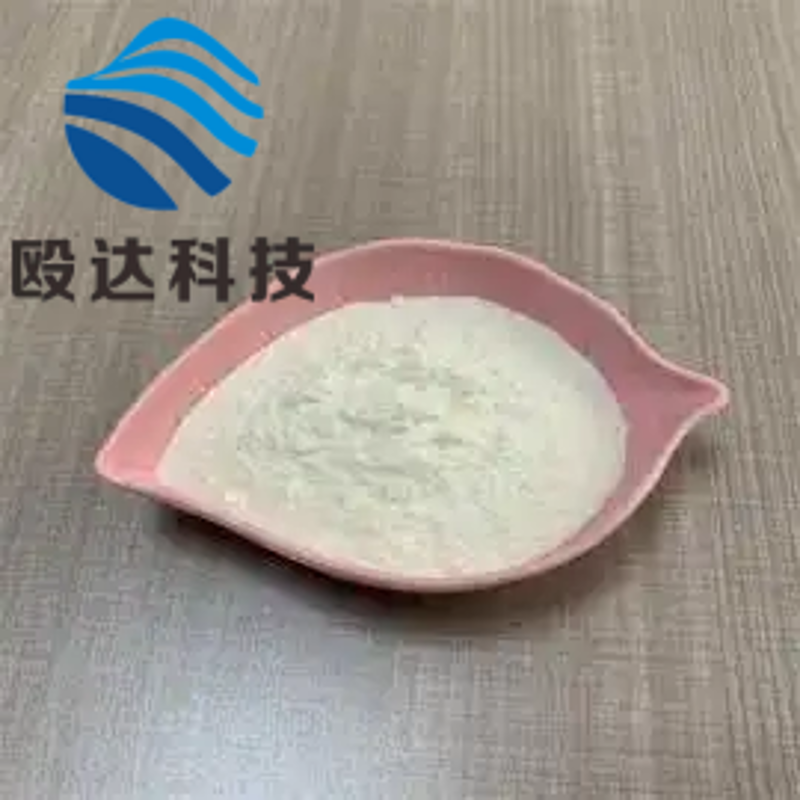-
Categories
-
Pharmaceutical Intermediates
-
Active Pharmaceutical Ingredients
-
Food Additives
- Industrial Coatings
- Agrochemicals
- Dyes and Pigments
- Surfactant
- Flavors and Fragrances
- Chemical Reagents
- Catalyst and Auxiliary
- Natural Products
- Inorganic Chemistry
-
Organic Chemistry
-
Biochemical Engineering
- Analytical Chemistry
- Cosmetic Ingredient
-
Pharmaceutical Intermediates
Promotion
ECHEMI Mall
Wholesale
Weekly Price
Exhibition
News
-
Trade Service
Source: Butterfly College Recently, at the 44th European Thyroid Association Annual Meeting (ETA2021), Professor Mario Salvi from the Graves Eye Disease Center of the Granda Endocrine Foundation of the University of Milan gave a wonderful speech on the "2021 ETA-ATA Graves Eye Disease Management Guide"
.
In recent years, some new therapies for the treatment of thyroid ophthalmopathy (GO/TED) have emerged one after another, but the specific role of the new therapies in the treatment of GO/TED remains to be determined
.
To this end, in 2021, the American Thyroid Association (ATA) and the European Thyroid Association (ETA) intend to jointly issue a consensus statement to provide clinicians with practical evidence-based guidance
.
The content mainly includes: clinical evaluation, criteria for referral to a specialist center, indications for treatment, and evaluation focusing on drug treatment and new therapies
.
ETA-ATA Eye Disease Management Guidelines Work Plan Professor Mario Salvi first briefly introduced the relevant work plans of the Guidelines Working Group: 1.
A literature search was conducted on English studies published from 1990 to 2021, with the search terms "thyroid ophthalmopathy" and "Graves orbital".
"Disease", "Graves Eye Disease" or "Thyroid-related Eye Disease"
.
2.
The working group constructed a detailed list of subtopics, including approximate word counts and reference limits, and assigned topics to the writing group based on professional knowledge for collaborative writing
.
Draft sections and related recommendations have been prepared and reviewed by the entire working group
.
3.
The working group discussed the recommendations of the members.
Although there was no formal classification based on the strength or quality of the evidence, these factors were considered before making recommendations
.
The final draft will be formally determined by the co-chairs and approved by the working group
.
4.
Two patient-led organizations (Graves Disease and Thyroid Foundation, Dutch Thyroid Organization) and the Ophthalmology Association will be invited to review the final draft
.
In addition, the consensus statement will be published on the ATA and ETA websites to solicit opinions and feedback from members for consideration by the working group and included in the manuscript
.
5.
Nomenclature: The working group unanimously chose the descriptive term "Thvroid Eve Disease" (TED) because it is the most commonly used in the literature and is meaningful to experts, scholars, patients and the public
.
Later, Professor Mario Salvi introduced some drugs and special indications included in the guide
.
Special indications include: DON high-risk patients, glucocorticoid-resistant TED patients, and patients with pregnancy/liver disease/infection with COVID-19/infectious diseases/cardiovascular disease/diabetes/chronic kidney disease
.
Medications include: cyclosporine (5mg/kg) combined with oral prednisone vs oral prednisone, cyclosporine (7.
5 mg/kg) vs oral steroids, oral glucocorticoids (GC), intravenous glucocorticoids (IVGC) ), mycophenolate mofetil combined with intravenous glucocorticoids, rituximab (RTX), tetuximab, tocilizumab, placebo (randomized controlled trial)
.
At the meeting, Professor Mario Salvi gave a key explanation on the clinical efficacy and safety of several major drugs involved in the guidelines
.
1.
Rituximab Professor Mario Salvi’s team conducted a double-blind, randomized trial to compare the effects of rituximab (RTX) and intravenous methylprednisolone (ivMP) in patients with moderately to severely active GO Curative effect
.
Thirty-two patients were randomly divided into two groups, and clinical activity scores (CAS) were performed on both groups
.
As shown in Figure 1, at 12 weeks, the CAS dropped to 1.
46±0.
4 in the ivMP group and 1.
3±0.
4 in the RTX group
.
At 16 weeks, the CAS was 2.
2±0.
4 in the ivMP group, and the CAS dropped to 0.
9±0.
3 in the RTX group (P<0.
04)
.
At 20 weeks, the CAS was 1.
6±0.
3 in the ivMP group, and the CAS decreased to 0.
5±0.
2 in the RTX group (P<0.
01)
.
At 24 weeks, the CAS in the ivMP group was 2.
3±0.
5, and the CAS in the RTX group dropped to 0.
6±3 (P<0.
006)
.
The results of this trial confirm that compared with ivMP, RTX is more effective in the treatment of moderately to severely active GO
.
Figure 1 From baseline check to 24 weeks of follow-up, the change of CAS in patients receiving ivMP or RTX treatment.
Professor Mario Salvi's team also conducted a randomized controlled trial of RTX in patients with Graves ophthalmopathy to verify the clinical efficacy and safety of the drug
.
The overall disease improvement (EUGOGO composite score) at 24 weeks is shown in Figure 2.
Among the patients receiving RTX treatment, 9/15 (60%) of the patients improved, 5/15 (33.
3%) of the patients were stable, only 1/15 ( 6.
6%) The patient's condition deteriorated
.
Among the patients treated with ivMP, 6/16 (37.
5%) patients got better, 2/16 (12.
5%) patients were stable, but 8/16 (50%) patients got worse (P=0.
026)
.
The results showed that compared with standard steroid therapy, the disease recurrence rate in the RTX group was significantly reduced
.
Figure 2 Overall disease improvement in 24 weeks (EUGOGO composite score) In order to understand the differences between Rituximab Randomized Controlled Trials (RCTs), Professor Mario Salvi considered the following factors: selected population, drug regimens, test methods used, etc.
, Then compare the test results
.
Professor Mario Salvi's team observed the people receiving RTX treatment in the two trials and found that there are many important differences between the two groups
.
For example, patients in Italy are relatively young and consist almost entirely of women
.
Compared with the elderly, these characteristics are related to the possibility of a higher response to treatment
.
Therefore, from this perspective, the population treated in the U.
S.
trial has a lower response to treatment
.
Another factor that can predict response to treatment may be the duration of the disease
.
In the trial, a trial conducted in Italy enrolled the population with an average duration of only 4.
5 months, while in the trial in the United States, the duration of the patient's disease was almost tripled
.
In addition, there are some influencing factors that will affect the effect of steroid treatment, see Table 1 for details
.
Table 1 Population differences between two randomized controlled trials 2.
Tetutumumab Tetutumumab is a monoclonal antibody against insulin-like growth factor Ⅰ receptor (IGF-1R)
.
Previous studies have shown that among the patients receiving treatment, 29 (69%) of 42 patients who received tettumumab at week 24 had a clinical response (P<0.
001), and 45 patients who received placebo treatment Nine of them (20%) had a clinical response
.
At week 6, 18 (43%) of 42 patients in the titulimumab group and 2 (4%) of 45 patients in the placebo group responded (P<0.
001)
.
The differences between the groups gradually increased over time
.
In patients with active eye disease, titulimumab was more effective than placebo in reducing exophthalmos and clinical activity scores
.
A study by RS Douglas et al.
also confirmed this point.
The research of his team showed that: in patients with active thyroid eye disease, titumumab is excellent in treating exophthalmos, clinical activity score, diplopia and improving quality of life.
Compared with placebo, serious adverse events are rare
.
3.
Tocilizumab Tocilizumab is a recombinant human IL-6 monoclonal antibody that can specifically bind to soluble and membrane-bound IL-6 receptors and inhibit IL-6-mediated signal transduction
.
Previous studies of tocilizumab in the treatment of moderate to severe corticosteroid-resistant Graves ophthalmopathy showed that tocilizumab can significantly improve the activity and severity of corticosteroid-resistant GO
.
Summary Finally, Professor Mario Salvi made a summary.
As shown in Table 2, the disease recurrence rate can be controlled at 0-6% after rituximab treatment, and the exophthalmos (> 2mm) is reduced by 80% after treatment with tetuximab.
, The cure rate of tocilizumab treatment reached 87%
.
Table 2 TED's immunomodulatory treatment looks forward to the official release of the 2021ETA-ATA Graves ophthalmopathy management guidelines to help more clinical treatments
.







